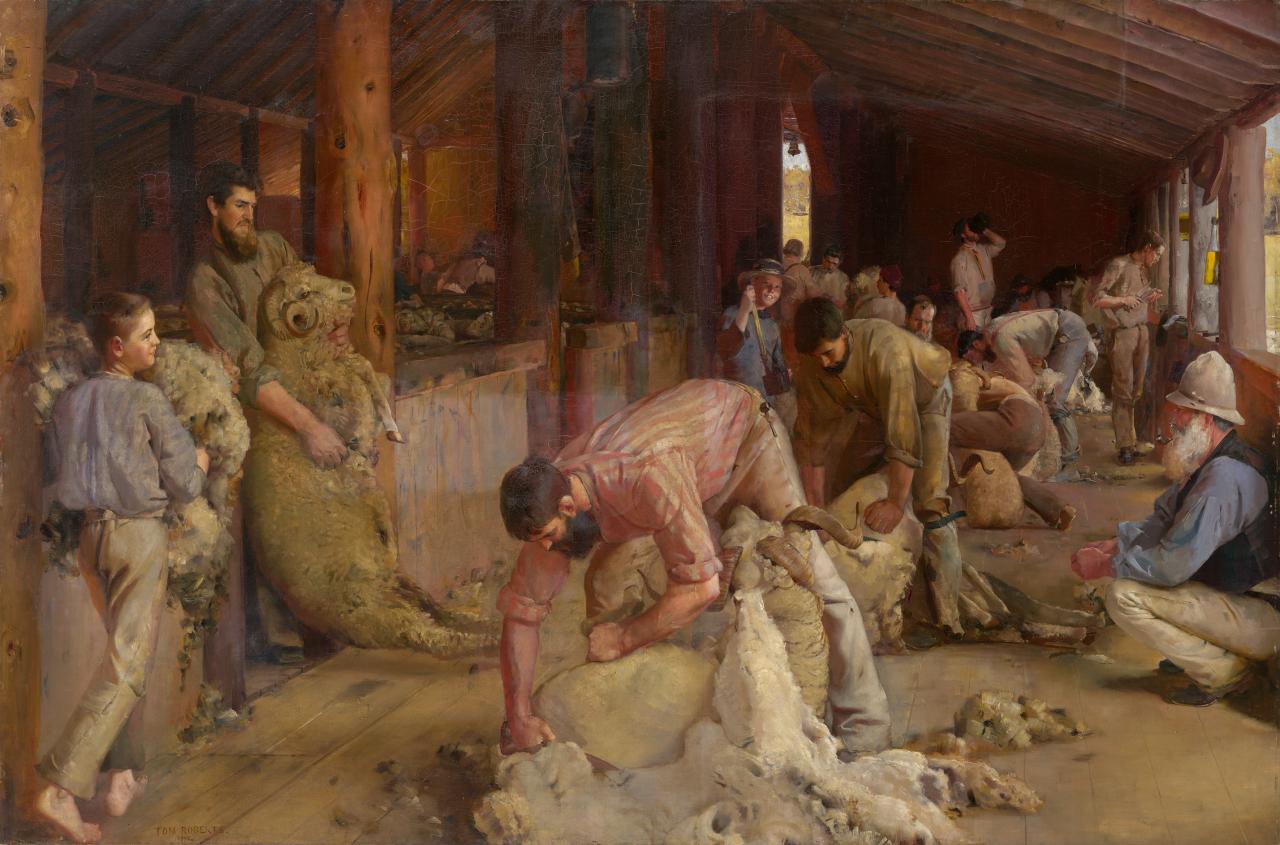
WCP: Art for whose Sake? Working-Class Life in Visual Art
Posted in Visiting Scholars | Tagged Art, Jean-François Millet, John Russo, Paintings, Sarah Attfield, Sherry Linkon, Tom Roberts, WCP, Working-Class Perspectives
—
What does it mean that most museums offer few images of working-class life? The ones that do tend to show workers from the outside through middle-class perspectives. In this week’s Working-Class Perspectives Post, Sarah Attfield explores the consequences of such representations on working-class people and their involvement or appreciation for art.
“But there was also something missing. Very rarely did I come across a work that represented me, or the people I knew. It didn’t bother me so much when it came to abstract art, because as far as I was concerned, this was about feeling or about a sensory experience. Figurative art was another story. There were the classic paintings and sculptures of rich and important people, still life scenes of opulent objects and interiors, and contemporary figurative art that showed people I didn’t know in fancy looking homes or lounging about doing nothing and looking mysterious (sometimes in the nude).
The art displayed in museums, whether classic and contemporary, rarely features working-class people. When it does, the images can be problematic, such as the European paintings of noble peasants epitomised in works such as Jean-François Millet’s nineteenth century painting Gleaners, which depicts working-class women picking up the leftovers from a harvest in rural France. The painting represents work, but the women are anonymous, and viewer can’t see their faces, so we don’t know how they might be feeling. Australian artist Tom Roberts also painted scenes that romanticized rural workers, such as sheep shearers.”
Read the post in its entirety (new window) and check out other Working-Class Perspectives posts on our website.
The renowned Working-Class Perspectives blog (new window) is brought to you by our Visiting Scholar for the 2015-16 academic year, John Russo, and Georgetown University English professor, Sherry Linkon. It features several regular and guest contributors.
